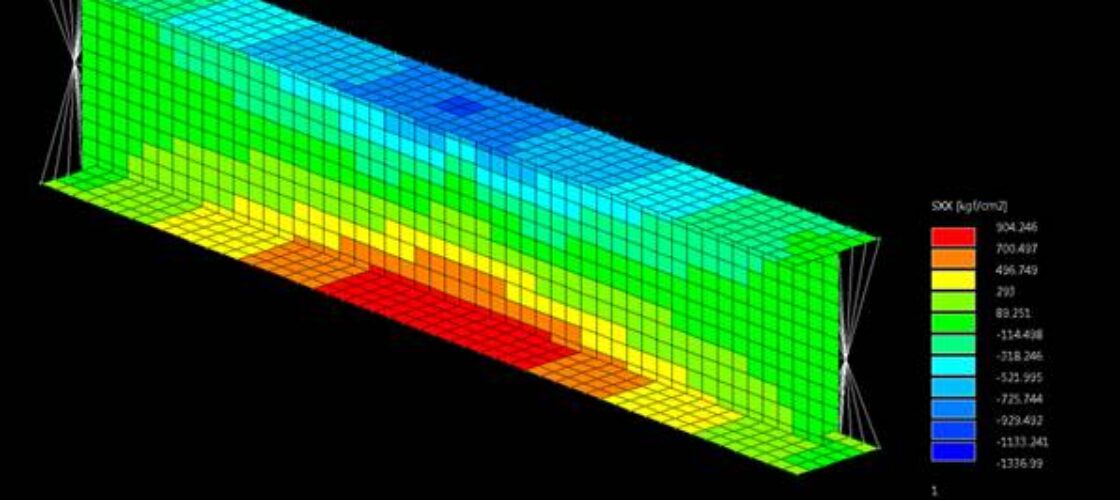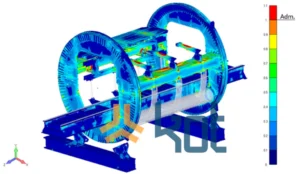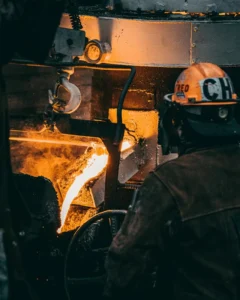Introduction: get to know Procal
Procal is Kot Engenharia's in-house finite element software, designed and created by Professor Ihor Kotchergenko. The software can be used to create models of steel, concrete and composite structures.
Procal is mainly used to calculate truss structures, stringers, towers, transfer houses, process buildings, bridges, footbridges and the like. As it is an in-house development tool, it allows Kot to create and use customized modeling, calculation, export, import, verification and results visualization resources. The software is therefore optimized to meet the needs of Kot and its customers.
In addition, Kot has a Procal development team that ensures that the program is constantly evolving to adapt to changing standards, customer specifications and market trends. The figure below shows the Procal interface:
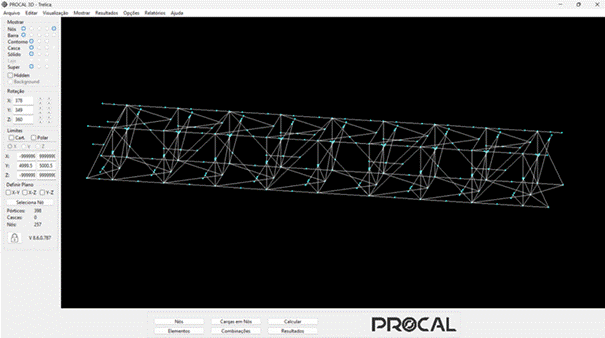
Procal front-end screen.
Development: Kot's finite element software
In Procal, you can create frame, shell and solid elements, allowing you to model a wide range of engineering problems. In the calculations of the frame elements, the deformations due to axial forces, bending moments in the two main axes, torsion and shear in both axes are obtained.
The application has a library of catalogs with different types of sections, such as "I", "U", "T", angle, HSS, reinforced concrete sections, among others. It is also possible to define profiles with customized dimensions or with a generic section (you only need to define its geometric properties).
The software allows nodal, concentrated or distributed loads to be applied to the elements, with linear, triangular or trapezoidal variations throughout the element or part of it. It is also possible to apply gravitational forces to frame and shell elements and to apply pressure to shell elements. Another feature for applying actions is the definition of temperature variation in elements, representing the effects of expansion or contraction of structures.
In addition to loads, Procal allows the definition of elastic bases or defined settlements. In this way, it is possible to account for the influence of supports on the analyzed structure, when applicable. This feature is very useful for representing soil-structure interaction, applicable to foundation structures, buildings and bridges.
Compliance with standards
One of Procal 's most recent updates is the automatic calculation of wind in structures according to the ABNT NBR 6123 standard of 2023. The basic wind speed, together with the standard factors, are taken into account to determine the pressure for each elevation of the calculation model. Using the appropriate pressure and shape coefficients for the structure, the program allows for an accurate calculation of wind actions. In Procal, it is also possible to automatically take into account the protection factor for parallel plane lattices, in accordance with NBR 6123. The figure below shows one of the automatic wind application screens:
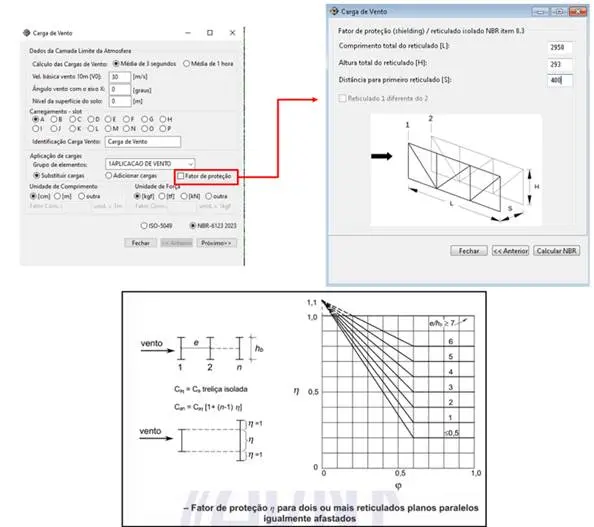
Shielding effect for wind application in structures in accordance with NBR-6123.
Once the model has been calculated and the stresses in the elements have been determined, Procal allows the frame elements, with steel sections, to be normatively checked in accordance with AISC 360 using the ASD and LRFD design methods. Each section is evaluated by comparing the acting forces with the strength of the structural element, generating utilization index results. It is possible to generate color-scale images showing the utilization level of each element, as shown in the example below.
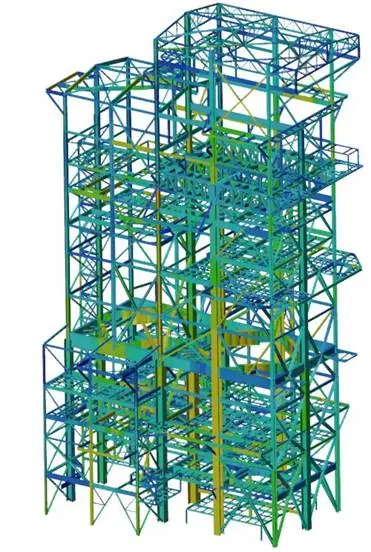
Utilization rates of frame elements - steel structure building.
In addition to the stress level of the elements, it is possible to view the displacements of the structure (in color scale or deformed structure), stress diagrams and stresses in shell elements. The following figures show some of the results:
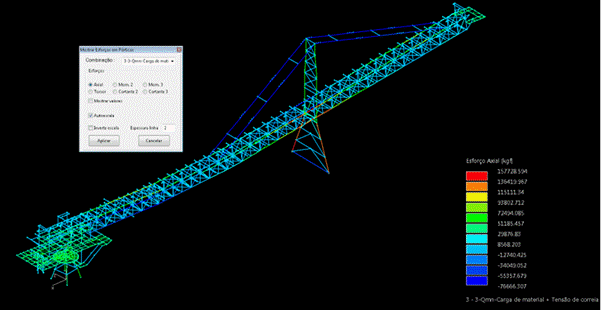
Visualization of stresses in cross-linked elements.
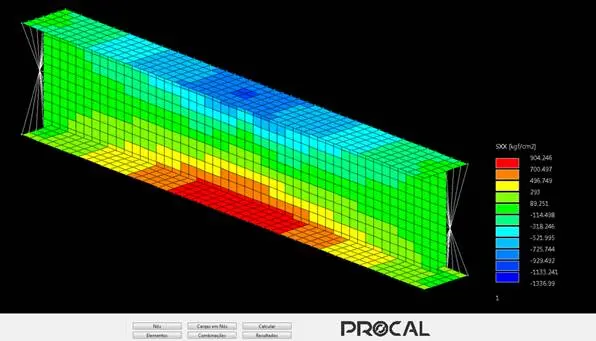
Visualization of stresses in shell elements.
Integrations
Procal also has import and export interfaces with different software and tools. Some examples are: FEMAP, ANSYS, SolidWorks, BIM via IFC files, VRML (virtual reality markup language), as well as internal tools and spreadsheets. The following figure shows a model created in Procal and exported to FEMAP.
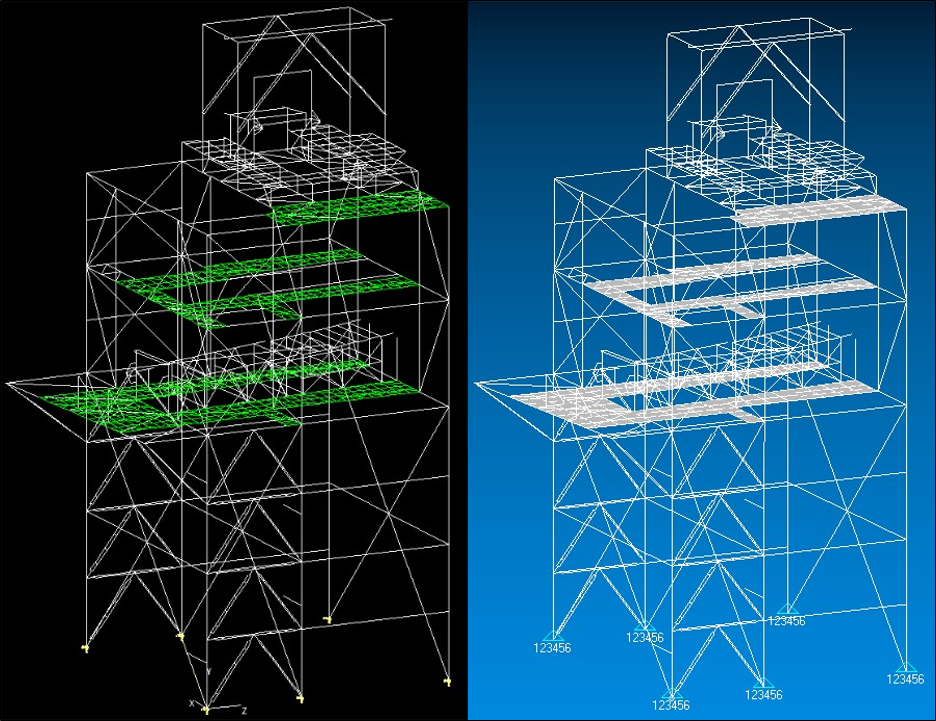
Transfer house model in Procal (left) and FEMAP (right).
Conclusion: complete and exclusive finite element software
Procal is a powerful tool. Developed by Kot, the tool has been constantly evolving over the years so that analysis can be carried out more efficiently and in compliance with the latest standards. Its features allow analysis to be carried out in a more agile, assertive and targeted manner for your customers' applications.
Technology and innovation is with Kot Engenharia
As a renowned company in the steel, reinforced concrete or mixed structures sectors, Kot has the experience and resources necessary for the structural assessment of various assets, mitigating risks and guaranteeing safety, in accordance with the applicable standards.
If you, like our more than 150 clients, are looking for structural engineering solutions for your operation, contact our team and find out more about our services. Since 1993, we have specialized in developing engineering solutions through inspections, technological tests and the use of computer methods for complex assessments of concrete and metal structures and industrial equipment.
Follow our pages on LinkedIn, Facebook e Instagram and keep following our content.
